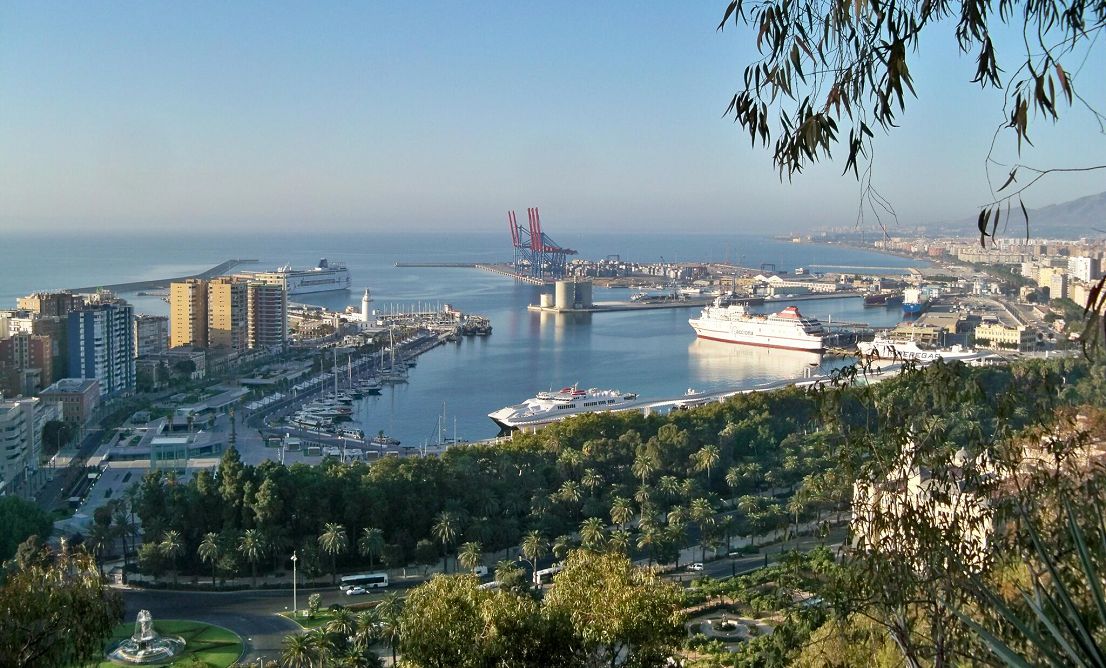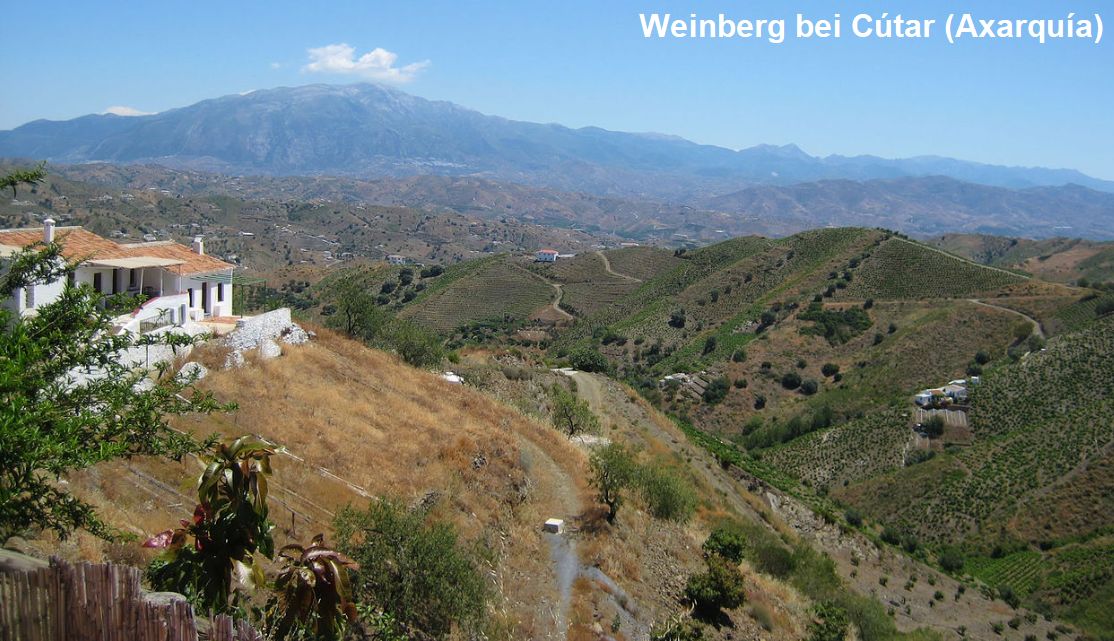Results
2,284 Results
Loading more Results ...
Loading more Results ...
| D.O. Málaga |
Description to D.O. Málaga
DO area for the famous dessert wine in the Spanish region of Andalusia, named after the province or provincial capital on the Costa del Sol (south coast). Normal white, rosé and red wines are also produced in the same area under the DO designation Sierras de Málaga. Málaga is one of the oldest types of wine mentioned in writing and was already famous in ancient times. The city was founded by the Phoenicians around 800 BC. Around 600 BC, the Greeks settled in Malaga and brought their knowledge of viticulture with them. Around 202 BC, the city came under Roman rule under the name "Flavia Malacita". In 743 it was conquered by the Moors. During the Arab occupation, there was a ban on alcohol with the death penalty for drunks. This was later replaced by fines and taxes.

In 1223, the King of France, Philip II. August (1165-1223), organised the "Battle of the Wines". The most prestigious wines of the time were presented at this event. Málaga wine was described as the "cardinal of wines". It was not until August 1487 that Malaga came back into the possession of the Christian kings as part of the Reconquista. For this reason, a 10-day exuberant festival is celebrated every year during this month. In the 18th century, the wine was already known far beyond its borders. In 1791, the Spanish ambassador in Moscow presented the Russian Tsarina Catherine II (1729-1796) with a few crates of it. She was delighted and decreed that this in the future could be imported duty-free. During the Victorian era under Queen Victoria (1819-1901), its popularity reached a peak.
In 1806, the "Casa y Compañía de Comercio de Viñeros de Málaga" was founded by royal decree: " In order to prevent the grapes from being crushedas much as possible, marks of origin that are difficult to forge are applied to the containers, crates or bales that contain them. Two intelligent people are chosen to ensure that the wines are as perfectas possible". In the middle of the 19th century, the province of Málaga was still the second largest Spanish wine-growing region with 100,000 hectares of vineyards. There was a considerable reduction, mainly due to the phylloxera catastrophe. In 1900, strict regulations were adopted and the origin was certified by a certificate of origin.

Area of origin and production
Today, the vineyards cover only around 12,000 hectares, of which the DO area accounts for only a tenth with 1,200 hectares of vines. It is divided into five sub-areas: Axarquía (pictured), Norte, Costa Occidental, Montes and, most recently, Serranía de Ronda. The vineyards are located in 54 municipalities around the cities of Málaga and Estepona and inland to the banks of the Genil at up to 700 metres above sea level. In the north, the soils are interspersed with limestone. In the Axarquía in the north-east, clay slate predominates. In the east there are chalk soils and on the Sierra sandy loam soils.
A Malaga can be extremely long-lived. A bottle bottled in 1875 from the estate of the Duke of Wellington (1769-1852) was tasted in 1995 and showed no signs of deterioration. However, it should be noted that this is an exception, not the rule, and that there are also very simple qualities that can be enjoyed young. Malaga must be made from the Pero Ximén (Pedro Ximénez) and/or Moscatel varieties. Moscatel mainly refers to Moscatel de Alejandría (Muscat d'Alexandrie), but Moscatel Morisco (Muscat Blanc) is also authorised. Concentrated musts and dry wine of the Doradilla, Lairén (Airén) and Romé varieties may also be used up to a maximum of 30%.
After harvesting, the fully ripe grapes are spread out on straw mats and sun-dried for up to three weeks. Evaporation of the water produces raisined grapes with the highest sugar content. According to DO regulations, ageing must always take place in the bodegas in the city of Malaga. Similar to sherry, Malaga is (alternatively) also produced using the solera system and different wines and vintages are blended together. The sweetness is usually achieved by stopping the fermentation by spriting with alcohol. Other types are sweetened with arrope (unfermented, cooked must) before or after fermentation. Most types are matured oxidatively in oak barrels for up to five years or longer.
Information on the bottle label
The bottle label contains information about the sweetness level, colour, ageing (in the barrel), alcohol content and type.
Degree of sweetness
- seco - less than 4 g/l
- semiseco - 4 to 12 g/l
- semidulce - 12 to 45 g/l
- dulce - over 45 g/l
- Dry Pale / Pale Dry - without arrope, residual sugar up to 45 g/l
- Pale Cream - without arrope, residual sugar over 45 g/l
- Dulce Crema / Cream - aged, residual sugar 100 to 140 g/l
- Sweet - aged, residual sugar over 140 g/l
Colour
- Dorado / Golden - naturally sweet, without arrope, aged
- Rojo Dorado / Red Gold - up to 5% arrope, aged
- Oscuro / Brown - 5 to 10% arrope, aged
- Colour - 10 to 15% arrope, aged
- Negro / Dark - more than 15% arrope, aged
Ageing
- Málaga Joven - young wine, no ageing (only for DO Sierras de Málaga)
- Málaga Pálido - aged for up to 6 months
- Málaga - aged for 6 to 24 months
- Málaga Noble - aged for 2 to 3 years
- Málaga Añejo - aged for 3 to 5 years
- Málaga Trasañejo - aged for over 5 years
Alcohol content
- Vino de licor (liqueur wine) - 15 to 22% vol.
- Vino dulce natural - 15 to 22% vol, zum. 244 g/l
- Vino naturalmente dulce - approx. 13% vol, approx. 300 g/l, without sprits
- Vino tranquilo - 10 to 15% vol, without spirits
Malaga types
There are around 15 types of Malaga, ranging from dry to sweet and with an alcohol content of between 15 and 22% vol.
Pedro Ximénez (Pero Ximén) and Moscatel: The name of a variety may be used if the wine has been made from at least 85% of the corresponding variety, minus the amount of products possibly used for sweetening.
Pálido: Designation for the Pedro Xyménez and Moscatel types to which neither arrope nor alcohol has been added and which have not undergone ageing. Pálido refers to the pale, light or straw-coloured wine.
Pajarete (Paxarete): A fortified wine or vino dulce natural without the addition of arrope. The dark amber-coloured wine matures for at least two years and has a residual sugar content of between 45 and 140 g/l.
Dulce Color: This is the classic Málaga - sweet, dark-coloured and high in alcohol. It must have a residual sugar content of at least 300 g/l and (before spriting) at least 13% vol. alcohol content. The wine with up to 15% arrope is mainly made from Pedro Ximénez, but can also contain small amounts of Moscatel.
Lágrima and Lacrimae Christi: For the top product, only the free-run must (Lagrima = tears) that runs off the uncrushed grapes is used, similar to the Eszencia in Hungarian Tokaj. The mahogany-coloured wine has a caramel and roasted aroma and is fortified to between 14 and 22% alcohol by volume. A Lágrima matured for over two years is called "Lacrimae Christi" (Tears of Christ).
Producers
There are around 425 winegrowers and 16 wineries (bodegas) that produce around 60,000 hectolitres of wine every year. More than a third of this is exported. Well-known producers are Barceló, Gomara, Larios, López García, López Hermanos, López-Madrid, Muñoz Cabrera, Pérez Teixera, Quitapenas, Schatz, Scholtz Hermanos (closed in 1996 - but wines are still on offer), Telmo Rodríguez and Tierras de Molina.
Further information
For the production of alcoholic beverages, see Champagne (sparkling wines), Distillation (distillates), Spirits (types), Winemaking (wines and wine types) and Wine Law (wine law issues).
Malaga harbour: by User:Dcapillae, CC BY-SA 2.0, Link
Vineyard near Cútar: from Viñedo en Cútar.jpg, CC BY-SA 2.0, Link
Recent wines 17
 Compañia Vitivinicola Tandem S.A.
— Andalucía
D.O. Málaga Piamater 12
Compañia Vitivinicola Tandem S.A.
— Andalucía
D.O. Málaga Piamater 12

 Bodegas Malaga Virgen SA (López Hermanos, S.A.)
— Andalucía
D.O. Málaga Pedro-Ximénez Reserva de Familia
Bodegas Malaga Virgen SA (López Hermanos, S.A.)
— Andalucía
D.O. Málaga Pedro-Ximénez Reserva de Familia

The most important grape varieties
More information in the magazine
- Our wine tips for the barbecue: From the Wachau to the Priorat Currently tasted
- Paradisiacal times! Tasting: European sparkling wines for the festive season
- Elegant balance between extremes In FocusDO Rueda
- Turnkey vineyards for the holiday finca Interview: Mallorca winemaker Henri Fink
- "Sustainability is part of our family's DNA" Vicky Gonzalez-Gordon of Gonzalez Byass on wine and sherry in climate change
- Montsant More radiant with every step
- The terroir of the Montsant Rocks, mountains and gentle river valleys in the south
- History of viticulture in the Montsant Of Roman amphorae, phylloxera and wine cathedrals
- Discover Montsant Enjoy wine, experience nature, experience culture
- Montsant on the plate Regional specialities between almonds, calçots and Vermouth